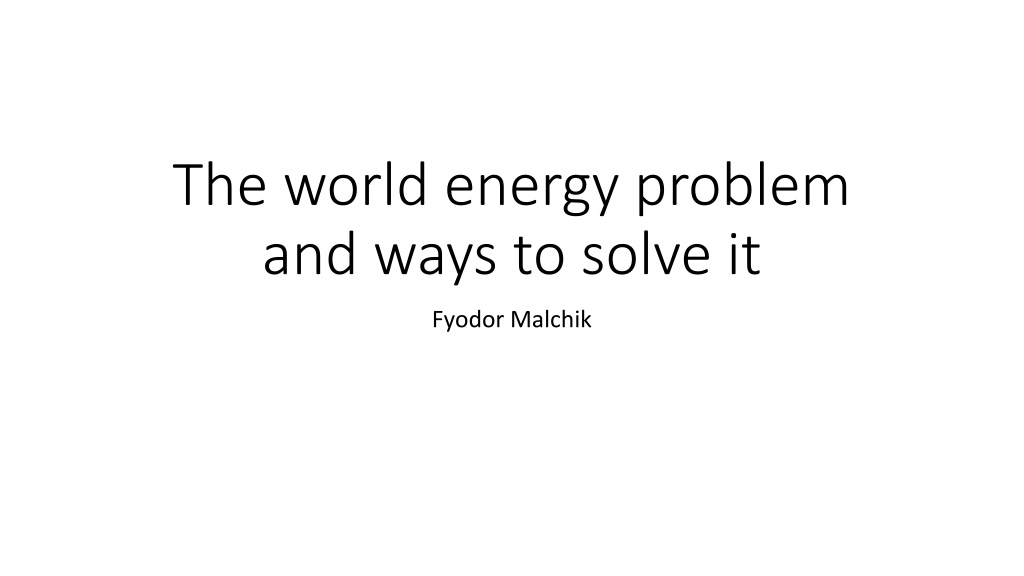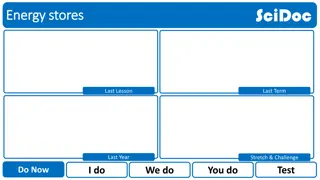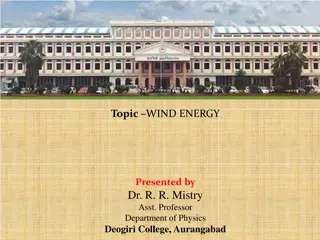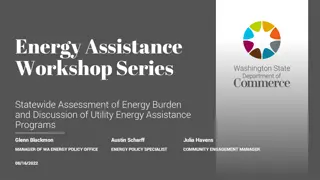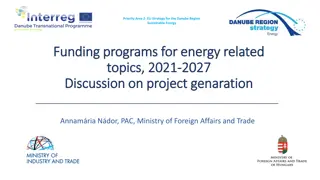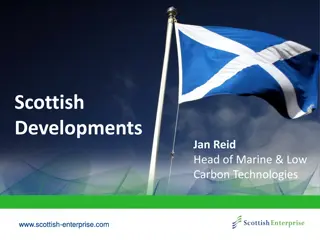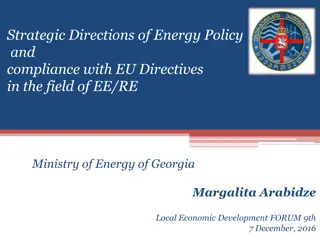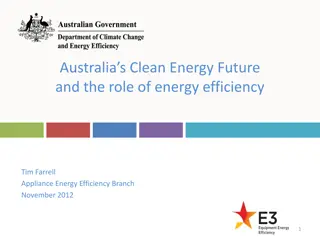Sustainable Energy Solutions for the Future
The world is facing an energy crisis, and it is crucial to consider alternative sources of energy for a sustainable future. Options such as wind power, sea power, nuclear energy, and solar power are being explored, each with its advantages and disadvantages. Decision-makers must weigh these factors to choose the most suitable energy mix for a country. Embracing renewable energy technologies is essential to reduce reliance on fossil fuels and combat environmental challenges.
Download Presentation

Please find below an Image/Link to download the presentation.
The content on the website is provided AS IS for your information and personal use only. It may not be sold, licensed, or shared on other websites without obtaining consent from the author.If you encounter any issues during the download, it is possible that the publisher has removed the file from their server.
You are allowed to download the files provided on this website for personal or commercial use, subject to the condition that they are used lawfully. All files are the property of their respective owners.
The content on the website is provided AS IS for your information and personal use only. It may not be sold, licensed, or shared on other websites without obtaining consent from the author.
E N D
Presentation Transcript
The world energy problem and ways to solve it Fyodor Malchik
The Energy crisis We are running out of energy. We need think about how we will make energy in the future.
Imagine you were running the country. What types of energy would you use? Wind, sea, nuclear, solar, coal? Look at the different types of energy then discuss your choices.
Wind power Onshore wind power has the potential to provide a valuable income for rural Wales, particularly to farmland communities in upland areas. Advantages Disadvantages Renewable. Non-polluting. A well proven technology. Does not produce power when the wind isn't blowing. Local residents are often against development as it changes the local landscape.
Sea power The sea around the Welsh coast has the potential to generate large amounts of electricity by harnessing the power of the tides, currents and Waves. Wales has strong sea currents and some of the highest tidal ranges in the world. Plans are being discussed for Swansea Bay, Severn Estuary and Liverpool Bay. Advantages Disadvantages Renewable. Non-polluting. Relatively new technology. Local residents are often against development as it changes the local landscape.
Aerial photograph of Trawsfynydd Nuclear Power Station, 2000 Nuclear power There are currently 16 nuclear power plants in Britain all will close by 2023. The idea is that other renewable energy sources will replace nuclear power production and relieve Britain's reliance on fossil-fuels. However, the government is currently being advised to build further nuclear power stations if they are to meet greenhouse gas emission targets. This picture shows Trawsfynydd nuclear power station in the Snowdonia National Park. It closed in 1993. The nuclear reactors are still held within the building. Advantages Relatively cheap to make. Disadvantages Nuclear power produces toxic radioactive waste which will last for tens and thousands of years. Does not contribute to the greenhouse effect. Nuclear power stations and the trains, lorries and ships that transport nuclear fuel waste could be an easy and devastating target for terrorists. Produces huge amounts of energy from small amounts of fuel.
Solar power Solar roof tiles use light from the sun to create electricity or hot water. Houses with lots of tiles could generate more electricity than they use this could be sold back to local electricity companies. Advantages It is a well proven technology. Well suited to providing power in home or single building applications. Renewable. Disadvantages They are expensive to buy. Making them requires a lot of energy.
Coal, gas and oil. Oil experts estimate that we will use all our oil reserves within the next 40 years! Others say we will find more. Advantages Relatively cheap to produce but prices are rising. Disadvantages The resources are running out. Most scientists believe they are heating up our planet. They pollute the air we breath and produce acid rain which damages buildings and crops.
Sun tubes Sun tubes reflect natural daylight down through a tube into a home or office. They are a great way to save energy during the day.
Natural lighting Ty Gwyrdd at St. Fagans The south face of the House is extensively glazed to maximise solar energy.
